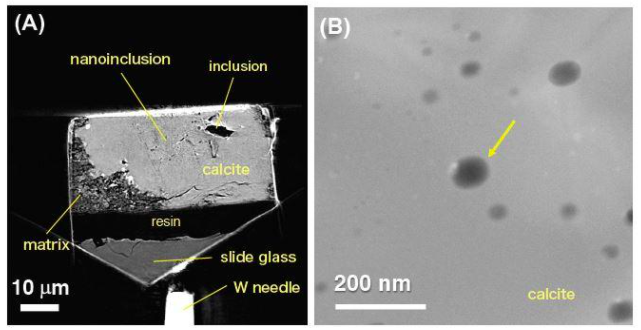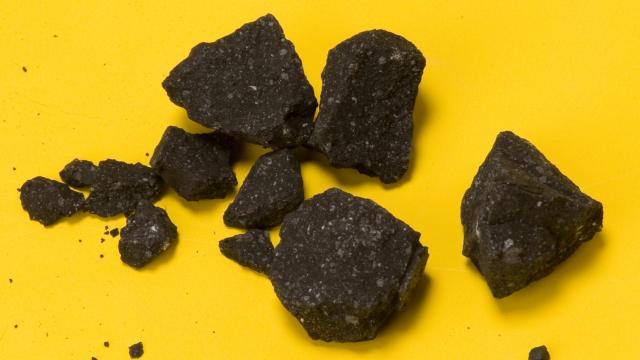A team of researchers recently took a close look at an ancient meteorite and determined that it contained carbon dioxide-rich water, a discovery that has implications for the theory that water (and thus, life) first arrived on Earth by way of these rocks.
The team’s results were published this week in Science Advances. Based on the presence of the carbon dioxide (CO2), the team posits that the asteroid formed in a much colder part of the solar system than our immediate vicinity; possibly beyond the orbit of Jupiter.
“Scientists further expect that liquid water should remain as fluid inclusions in minerals that precipitated in aqueous fluid,” said Akira Tsuchiyama, a geochemist at Ritsumeikan University in Japan, in a university press release. “This achievement shows that our team could detect a tiny fluid trapped in a mineral 4.6 billion years ago.”

The rock under inspection was the Sutter’s Mill meteorite, named for the site that kicked off the California Gold Rush in 1848. The meteorite landed near the site nine years ago today, and 90 fragments of it have been found, weighing nearly a kilogram in total.
Early inspections of the meteorite determined that it was a carbonaceous chondrite, a tantalising kind of meteorite with origins in the early solar system some 4.6 billion years ago. (One fell on an English driveway in February.) These primordial rocks hold evidence of liquid water and even amino acids, crucial bits and bobs for sparking life on Earth. And though the earliest evidence for life on our planet is nearly a billion years younger than carbonaceous chondrites, recent research has shown evidence that some of these rocks were carrying liquid water as recently as the last several hundred thousand years.

What Tsuchiyama’s team determined was that the Sutter’s Mill meteorite once carried liquid water as well as calcite crystals, which hosted carbon dioxide. The carbon dioxide elements probably became crystallised in the larger asteroid, the team surmised, when the space rock was far enough from the Sun that its components froze. These loci are called “snow lines,” and they bookmark the places in space where phase changes happen for everything from water to CO2.
From the snow lines of the Sutter’s Mill rock, the team determined the asteroid it came from probably formed beyond Jupiter’s orbit, before some part of it migrated across the solar system and eventually hit California. I’d pick a little bit of carbonaceous chondrite over gold any day.
